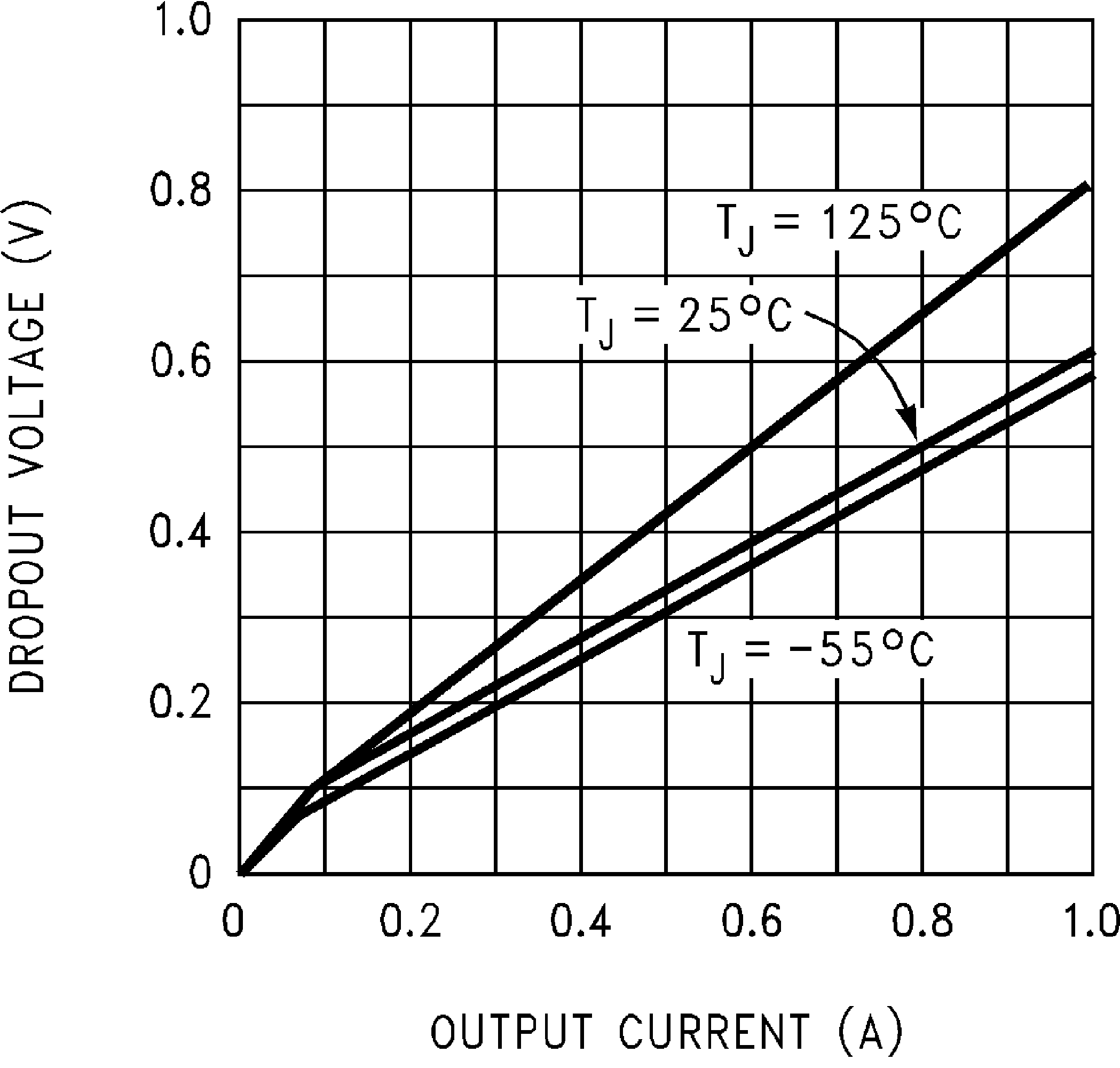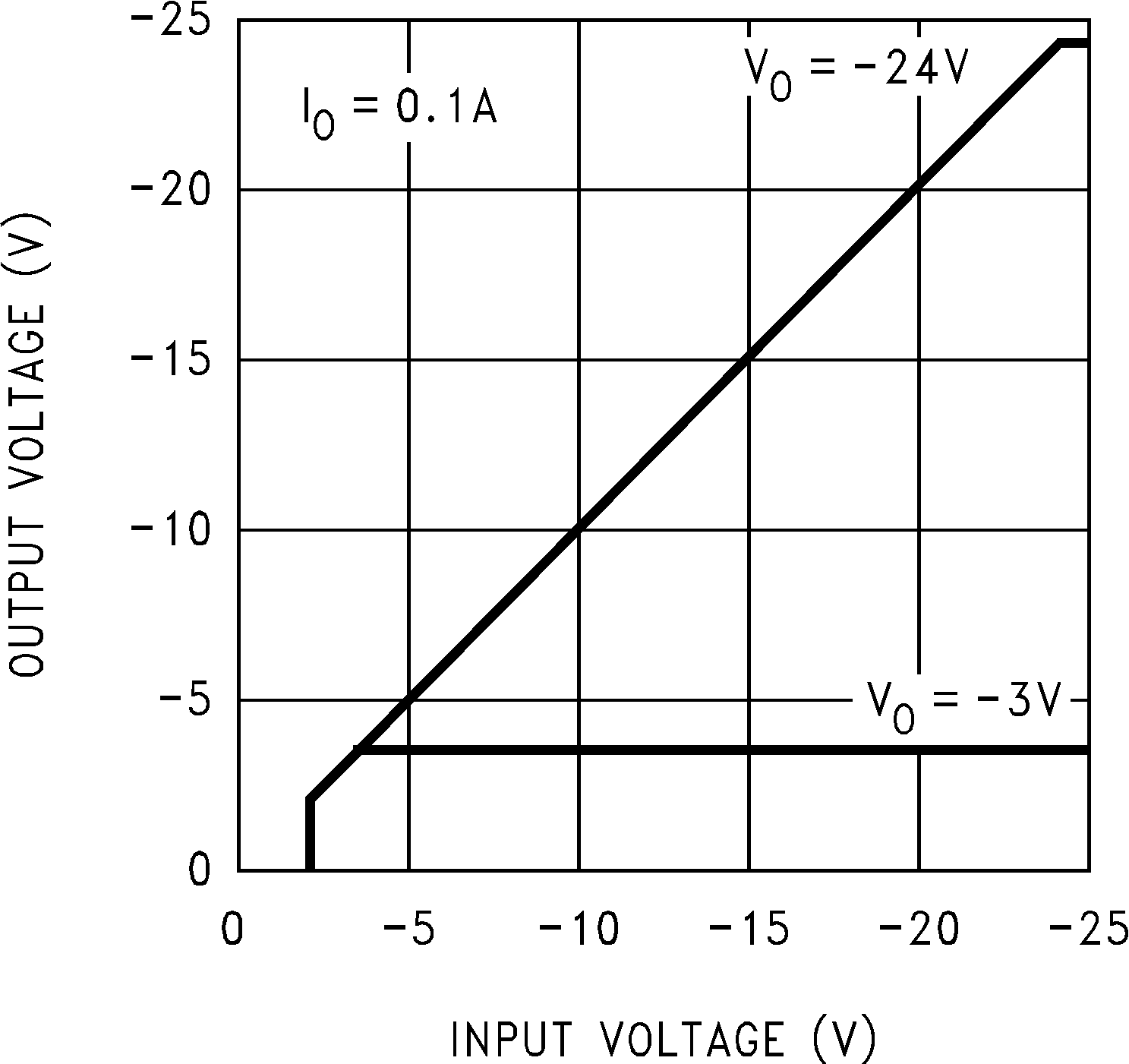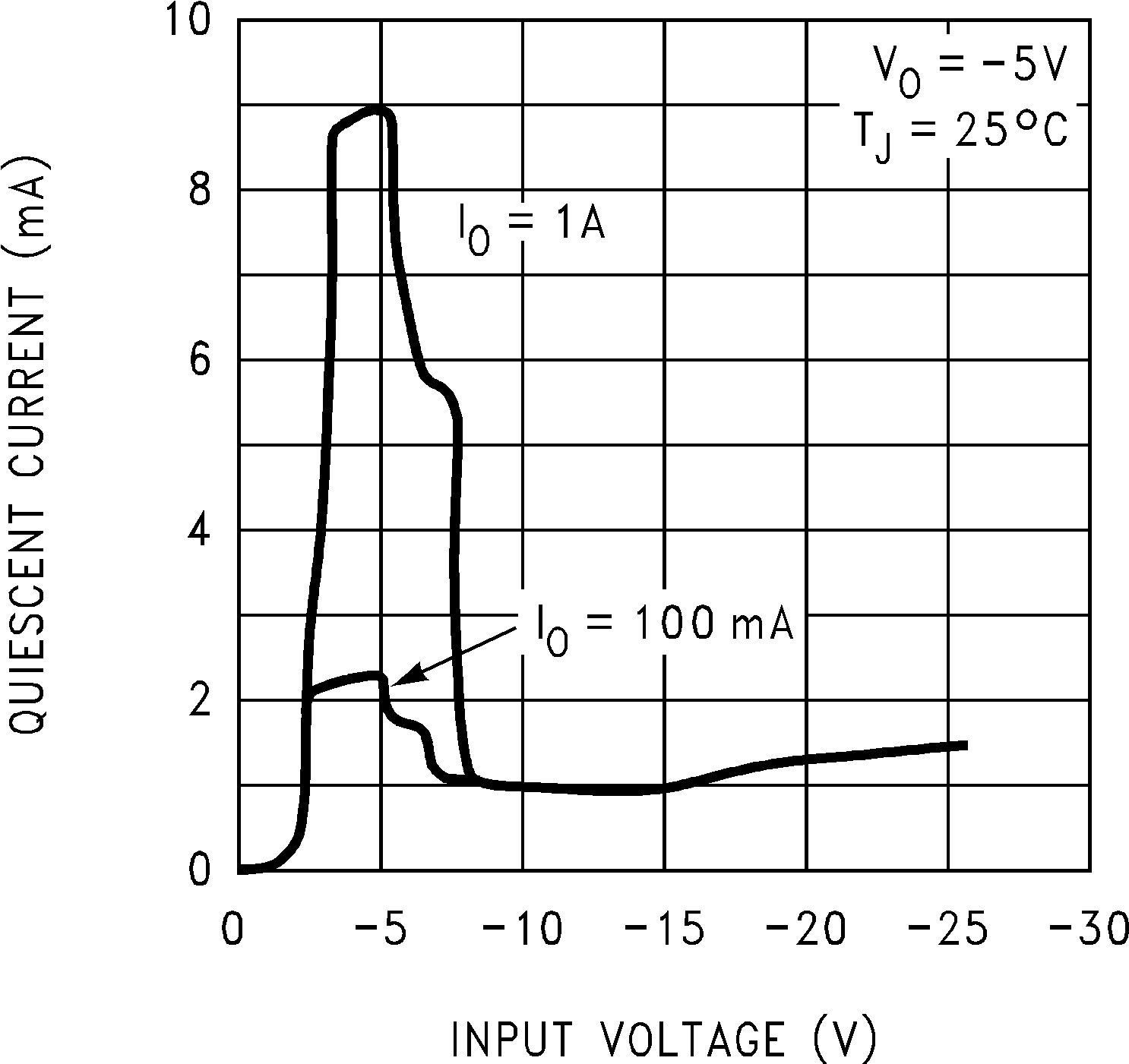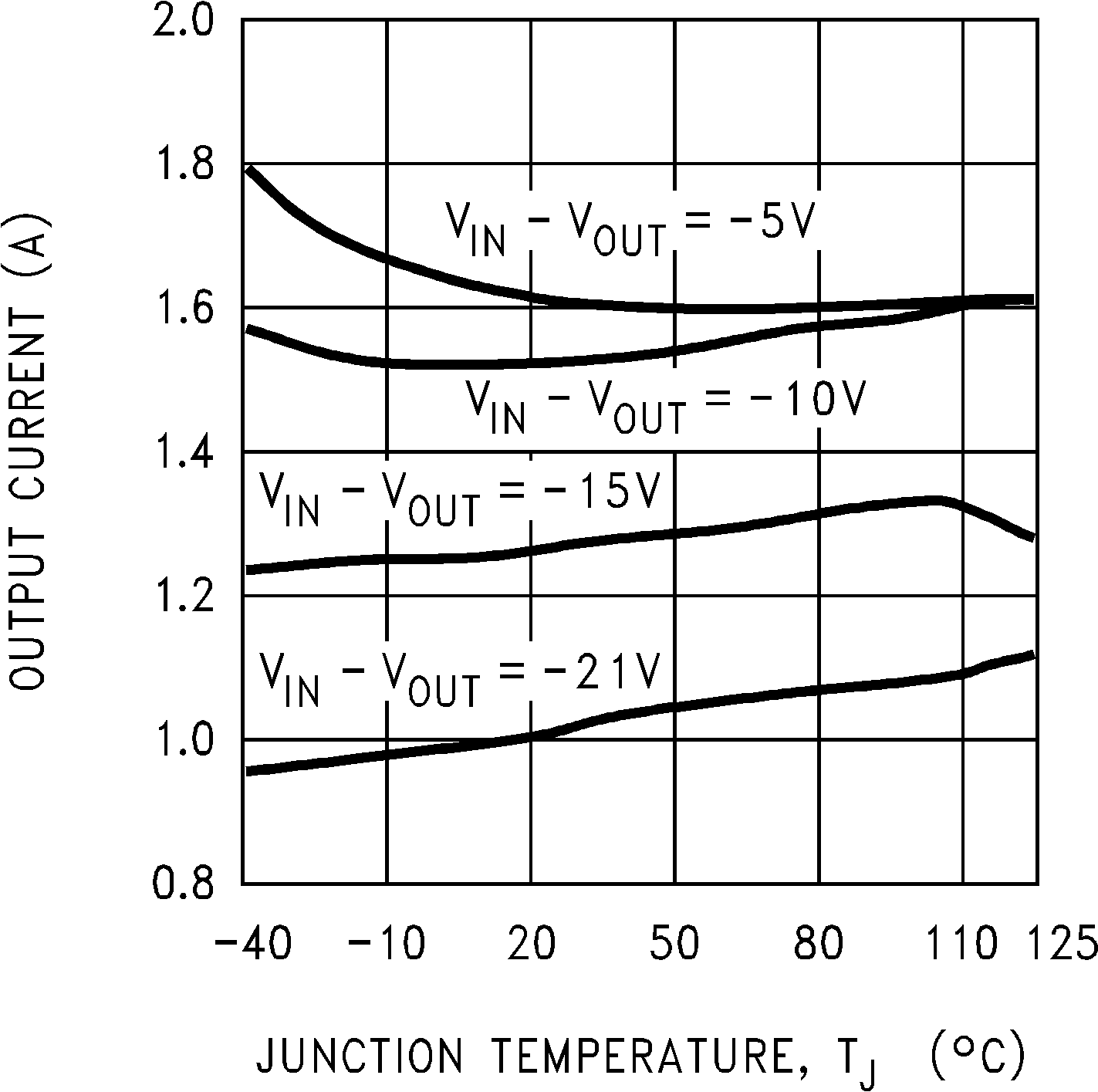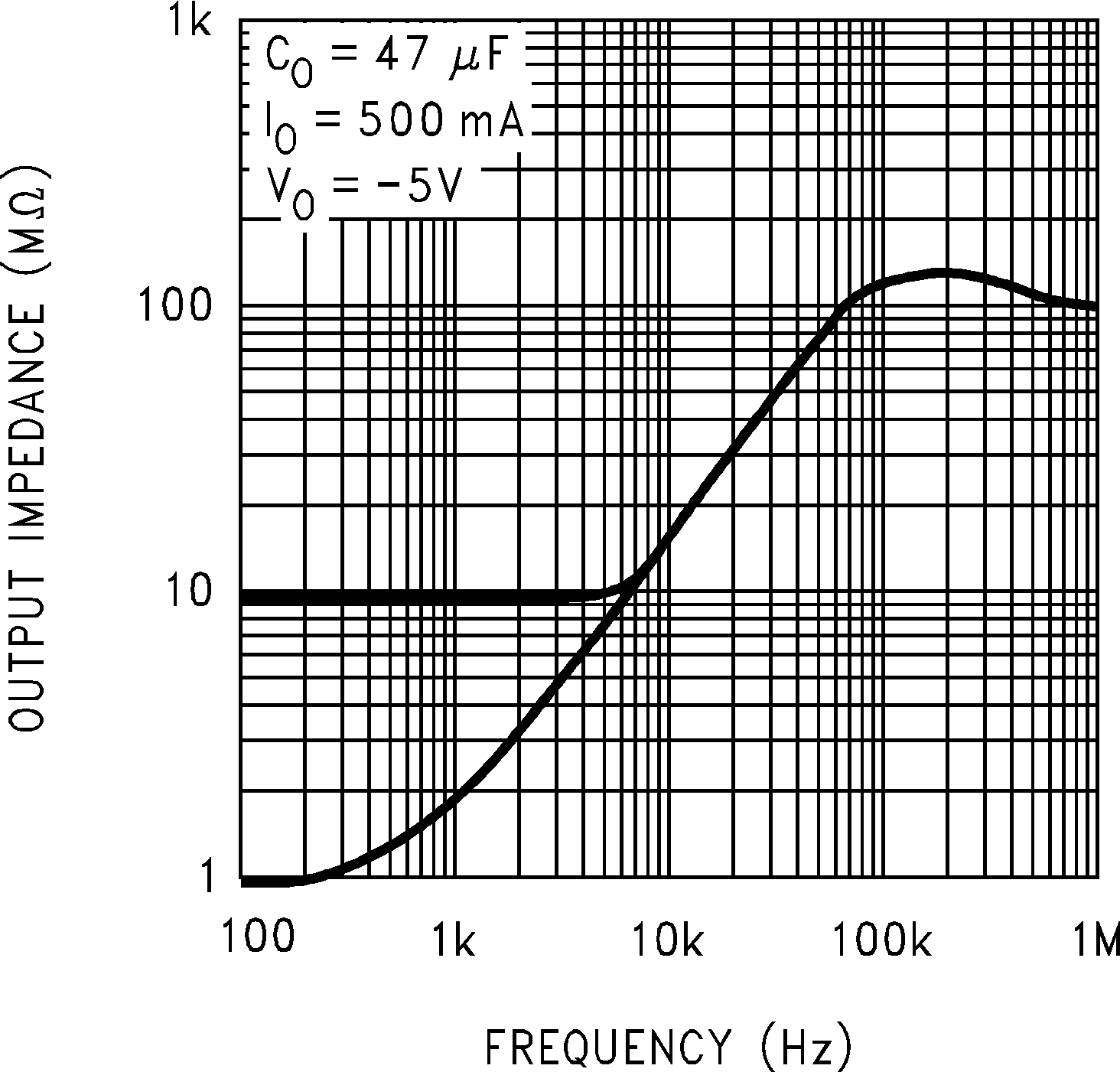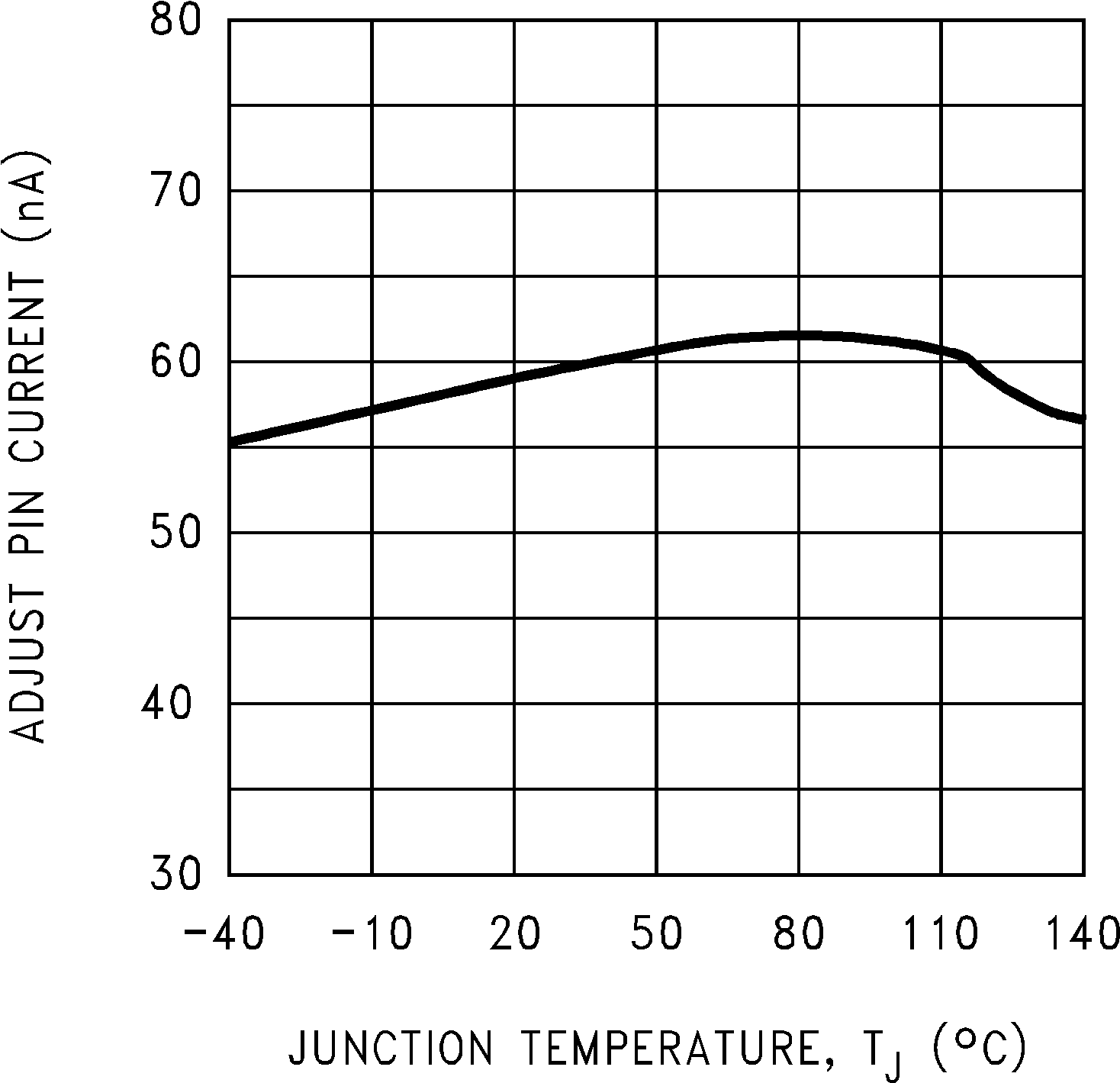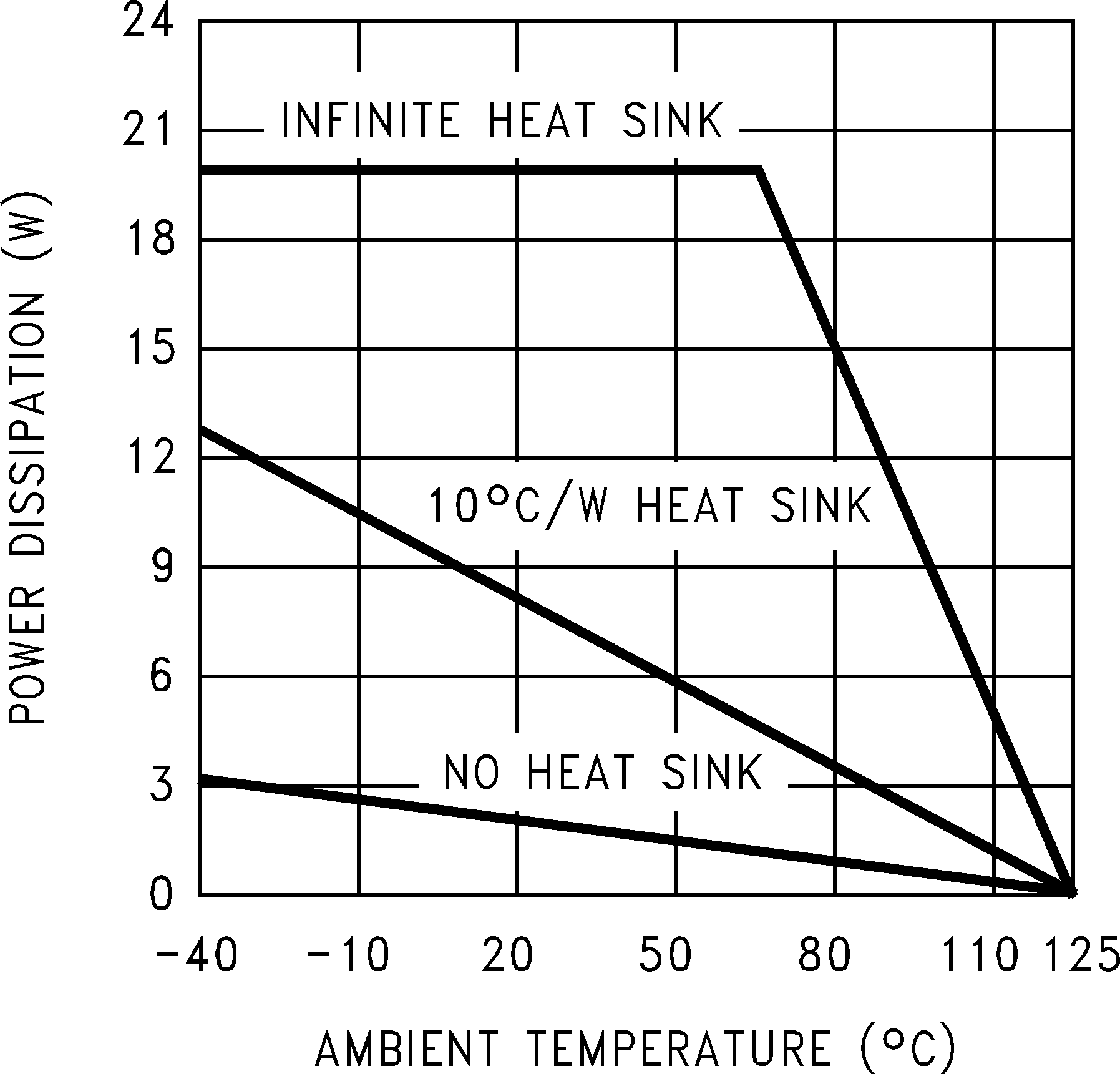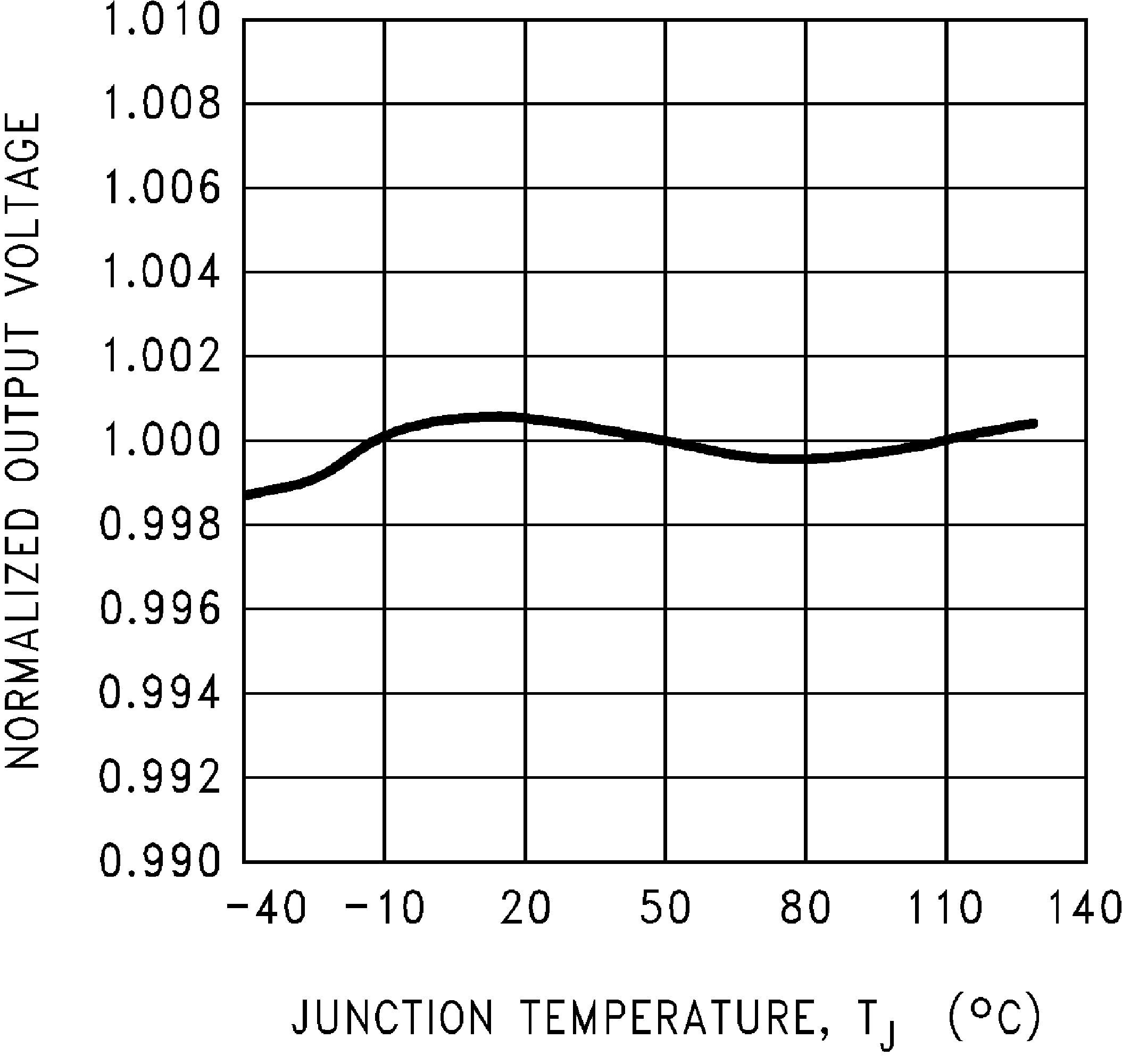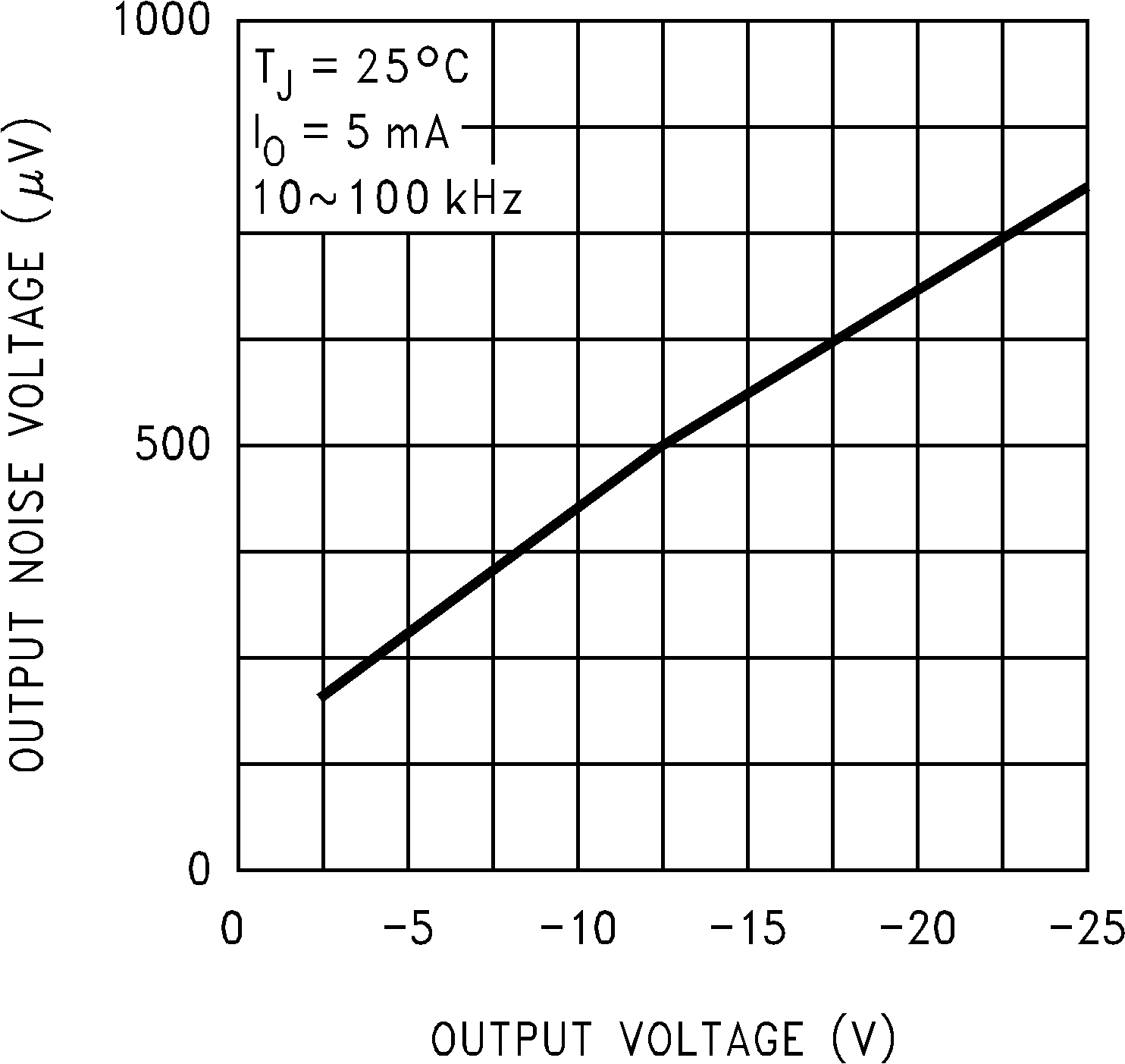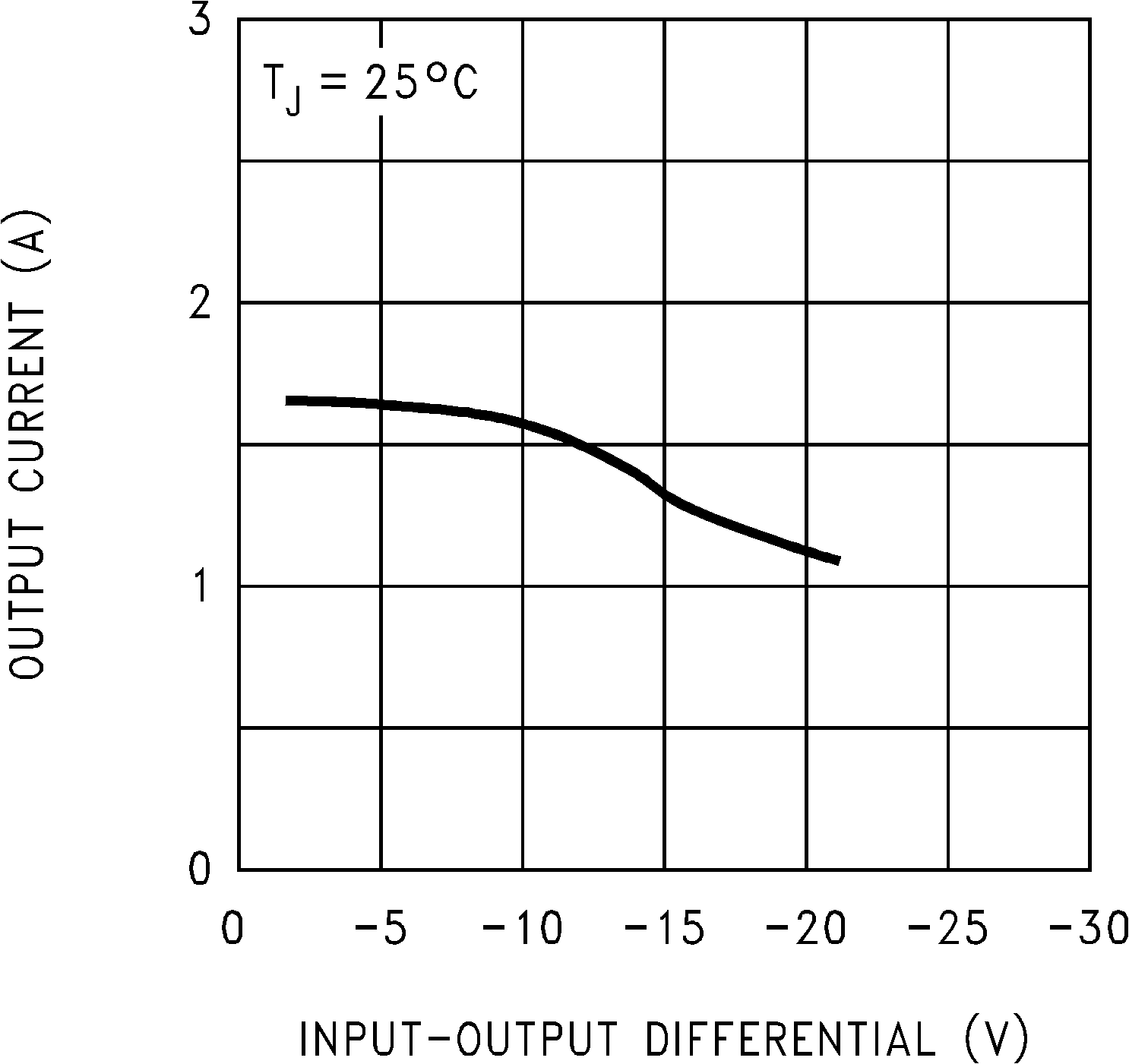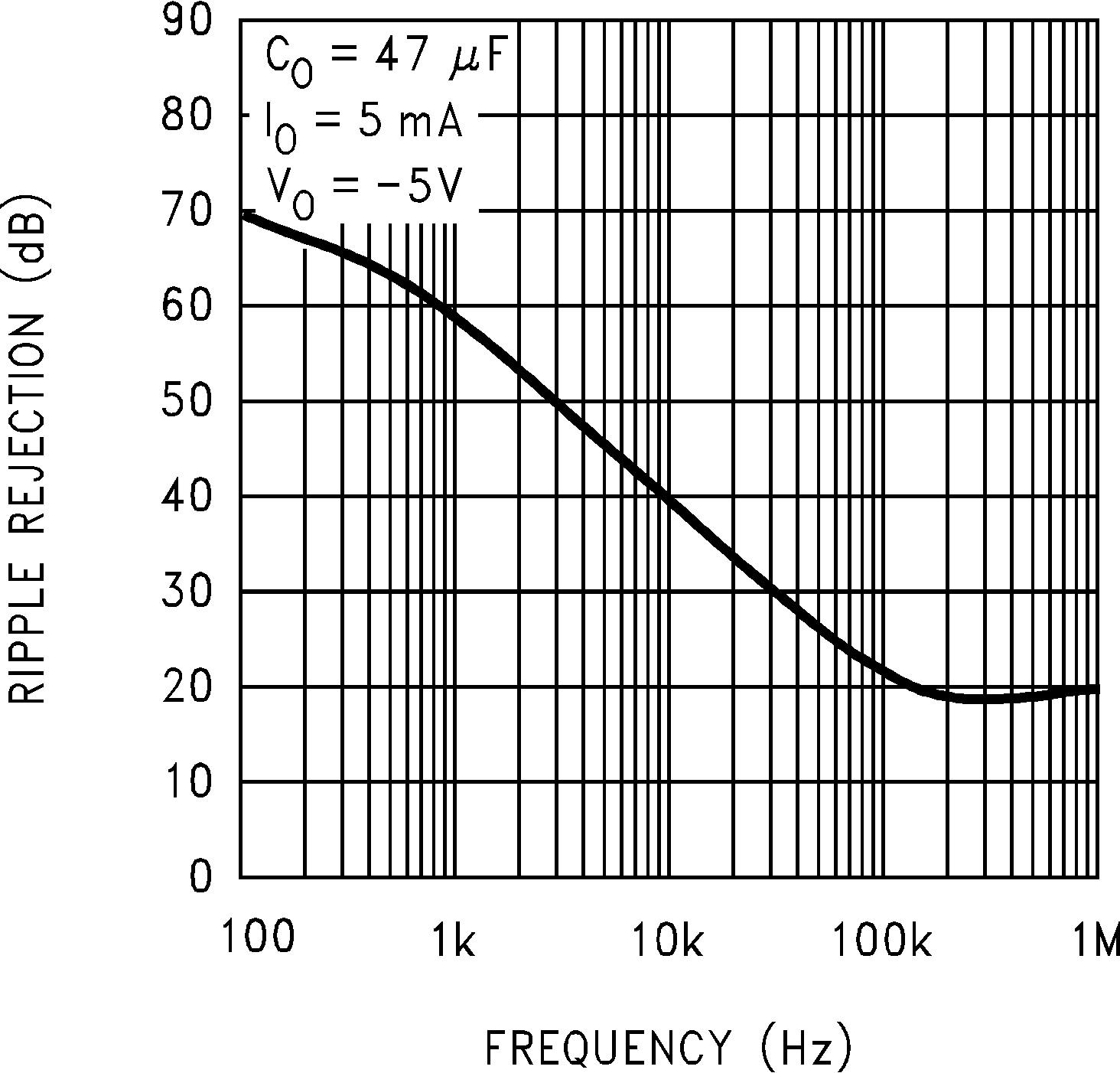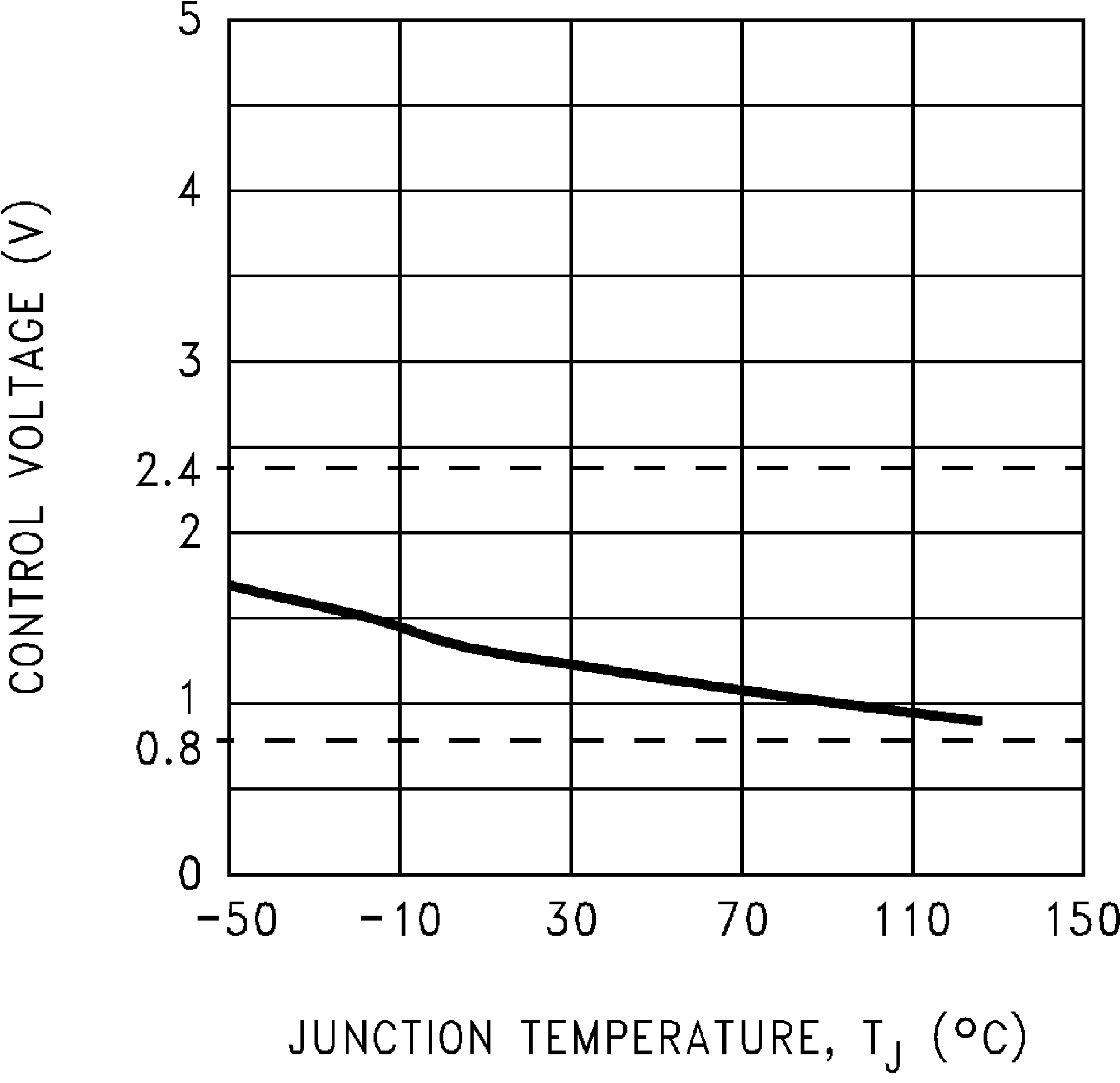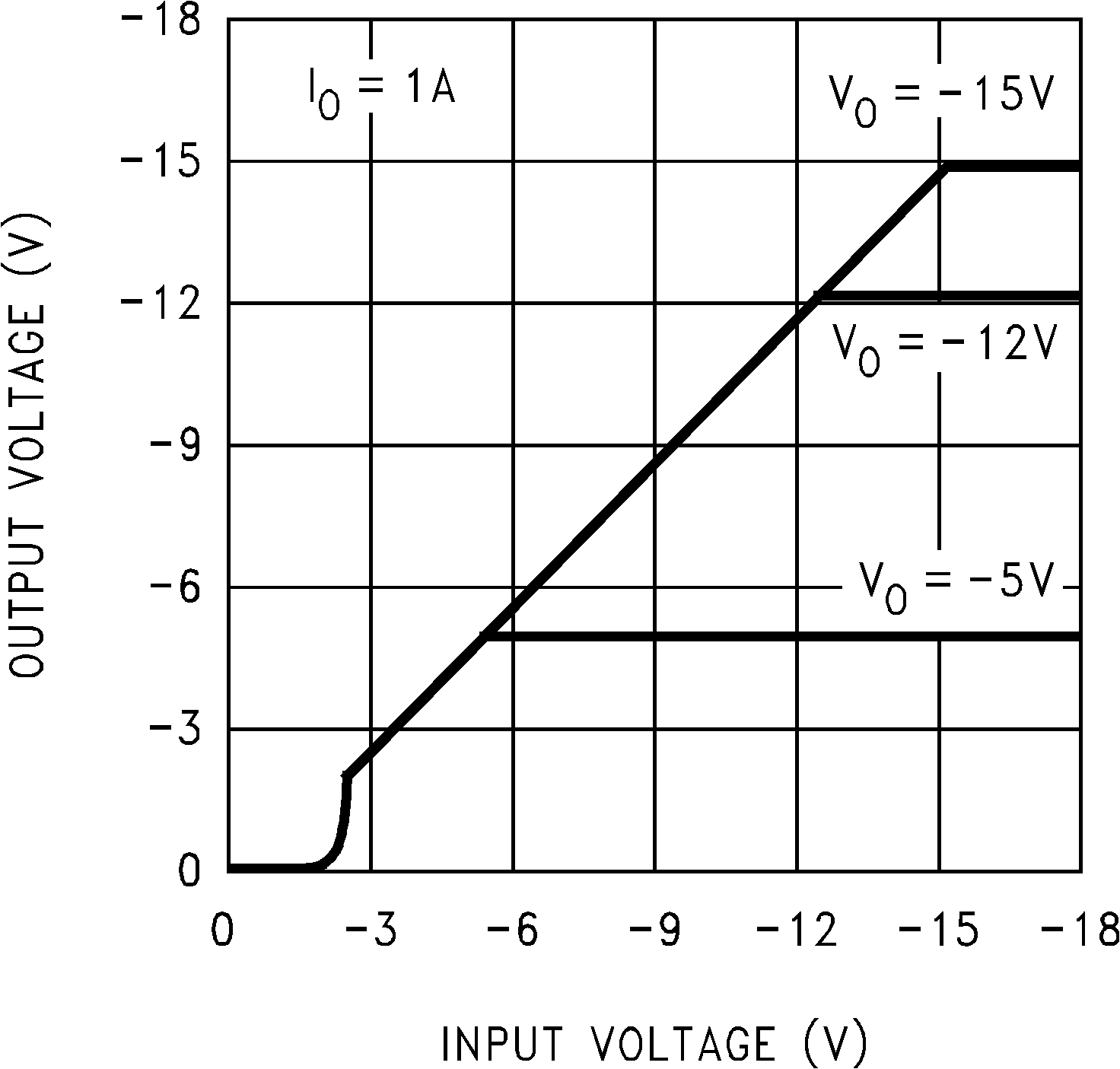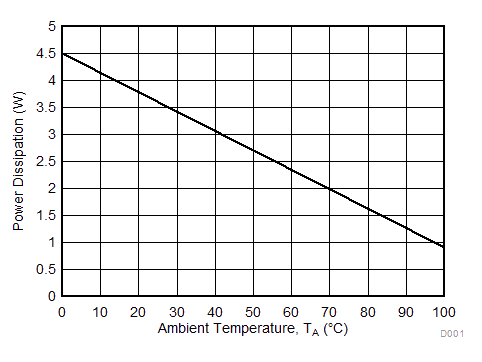SNVS099I May 1999 – October 2016 LM2991
PRODUCTION DATA.
- 1 Features
- 2 Applications
- 3 Description
- 4 Revision History
- 5 Pin Configuration and Functions
- 6 Specifications
- 7 Detailed Description
- 8 Application and Implementation
- 9 Power Supply Recommendations
- 10Layout
- 11Device and Documentation Support
- 12Mechanical, Packaging, and Orderable Information
封装选项
机械数据 (封装 | 引脚)
散热焊盘机械数据 (封装 | 引脚)
- KTT|5
订购信息
6 Specifications
6.1 Absolute Maximum Ratings
over operating free-air temperature range (unless otherwise noted)(1)(2)| MIN | MAX | UNIT | ||
|---|---|---|---|---|
| Input voltage | –26 | 0.3 | V | |
| Power dissipation(3) | Internally limited | |||
| Storage temperature, Tstg | –65 | 150 | °C | |
(1) Stresses beyond those listed under Absolute Maximum Ratings may cause permanent damage to the device. These are stress ratings only, which do not imply functional operation of the device at these or any other conditions beyond those indicated under Recommended Operating Conditions. Exposure to absolute-maximum-rated conditions for extended periods may affect device reliability.
(2) If Military/Aerospace specified devices are required, contact the Texas Instruments Sales Office/Distributors for availability and specifications.
(3) The maximum power dissipation is a function of TJ(MAX), RθJA, and TA. The maximum allowable power dissipation at any ambient temperature is PD = (TJ(MAX) − TA)/RθJA. If this dissipation is exceeded, the die temperature will rise above 125°C, and the LM2991 will eventually go into thermal shutdown at a TJ of approximately 160°C. Refer to Thermal Shutdown for more details.
6.2 ESD Ratings
| VALUE | UNIT | |||
|---|---|---|---|---|
| V(ESD) | Electrostatic discharge | Human-body model (HBM), per ANSI/ESDA/JEDEC JS-001(1) | ±2000 | V |
(1) JEDEC document JEP155 states that 500-V HBM allows safe manufacturing with a standard ESD control process.
6.3 Recommended Operating Conditions
over operating free-air temperature range (unless otherwise noted)(1)| MIN | NOM | MAX | UNIT | ||
|---|---|---|---|---|---|
| Junction temperature, TJ | –40 | 125 | °C | ||
| ON/OFF pin | 0 | 5 | V | ||
| Maximum input voltage (operational) | –26 | V | |||
(1) Stresses beyond those listed under Absolute Maximum Ratings may cause permanent damage to the device. These are stress ratings only, which do not imply functional operation of the device at these or any other conditions beyond those indicated under Recommended Operating Conditions. Exposure to absolute-maximum-rated conditions for extended periods may affect device reliability.
6.4 Thermal Information
| THERMAL METRIC(1) | LM2991 | UNIT | |||
|---|---|---|---|---|---|
| TO-263 (KTT) | TO-220 (NDH)(2) | TO-220 (KC)(2) | |||
| 5 PINS | 5 PINS | 5 PINS | |||
| RθJA(3) | Junction-to-ambient thermal resistance, High-K | 27.8 | 54.4 | 56.4 | °C/W |
| RθJC(top) | Junction-to-case (top) thermal resistance | 41.4 | 30.1 | 40.0 | °C/W |
| RθJB | Junction-to-board thermal resistance | 10.9 | 33.2 | 38.6 | °C/W |
| ψJT | Junction-to-top characterization parameter | 6.0 | 11.6 | 12.8 | °C/W |
| ψJB | Junction-to-board characterization parameter | 10.6 | 36.2 | 35.3 | °C/W |
| RθJC(bot) | Junction-to-case (bottom) thermal resistance | 0.7 | 0.5 | 0.6 | °C/W |
(1) For more information about traditional and new thermal metrics, see Semiconductor and IC Package Thermal Metrics.
(2) The TO-220 package is vertically mounted in center of a JEDEC High-K test board (JESD 51-7) with no additional heat sink attached. This is a through-hole package; this is NOT a surface-mount package.
(3) Thermal resistance value RθJA is based on the EIA/JEDEC High-K printed circuit board defined by JESD51-7 - High Effective Thermal Conductivity Test Board for Leaded Surface Mount Packages.
6.5 Electrical Characteristics
VIN = −10 V, VOUT = −3 V, IOUT = 1 A, COUT = 47 μF, R1 = 2.7 kΩ, TJ = 25°C, unless otherwise specified.| PARAMETER | TEST CONDITIONS | MIN | TYP(1) | MAX | UNIT |
|---|---|---|---|---|---|
| Reference voltage | 5 mA ≤ IOUT ≤ 1 A | –1.234 | –1.210 | –1.186 | V |
| 5 mA ≤ IOUT ≤ 1 A, VOUT – 1 V ≥ VIN > −26 V −40°C ≤ TJ ≤ 125°C |
–1.27 | –1.15 | V | ||
| Output voltage (VOUT) | –2 | –3 | V | ||
| VIN = −26 V | –24 | –25 | V | ||
| Line regulation | IOUT = 5 mA, VOUT −1 V > VIN > −26 V | 0.004 | 0.04 | %/V | |
| Load regulation | 50 mA ≤ IOUT ≤ 1 A | 0.04% | 0.4% | ||
| Dropout voltage | IOUT = 0.1 A, ΔVOUT ≤ 100 mV | 0.1 | 0.2 | V | |
| IOUT = 0.1 A, ΔVOUT ≤ 100 mV −40°C ≤ TJ ≤ 125°C |
0.3 | ||||
| IOUT = 1 A, ΔVOUT ≤ 100 mV | 0.6 | 0.8 | V | ||
| IOUT = 1 A, ΔVOUT ≤ 100 mV −40°C ≤ TJ ≤ 125°C |
1 | ||||
| Quiescent current | IOUT ≤ 1 A | 0.7 | mA | ||
| IOUT = 1 A, −40°C ≤ TJ ≤ 125°C | 5 | ||||
| Dropout quiescent current | VIN = VOUT, IOUT ≤ 1 A | 16 | 50 | mA | |
| Ripple rejection | Vripple = 1 VRMS, ƒripple = 1 kHz, IOUT = 5 mA |
50 | 60 | dB | |
| Output noise | 10 Hz to 100 kHz, IOUT = 5 mA | 200 | 450 | µV | |
| ON/OFF input voltage | VOUT: ON | 1.2 | V | ||
| VOUT: ON −40°C ≤ TJ ≤ 125°C | 0.8 | ||||
| VOUT: OFF | 1.3 | V | |||
| VOUT: OFF, −40°C ≤ TJ ≤ 125°C | 2.4 | ||||
| ON/OFF input current | VON/OFF = 0.8 V, VOUT: ON | 0.1 | 10 | µA | |
| VON/OFF = 2.4 V, VOUT: OFF | 40 | 100 | |||
| Output leakage current | VIN = −26 V, VON/OFF = 2.4 V, VOUT = 0 V | 60 | 250 | µA | |
| Current limit | VOUT = 0 V | 1.5 | 2 | A |
(1) Typicals are at TJ = 25°C and represent the most likely parametric norm.
6.6 Typical Characteristics
